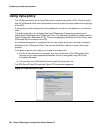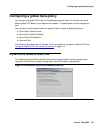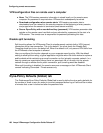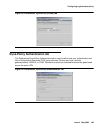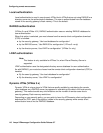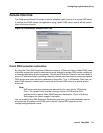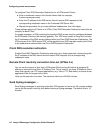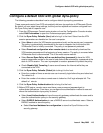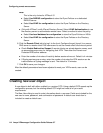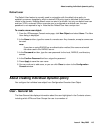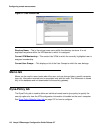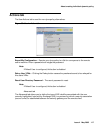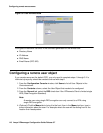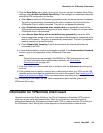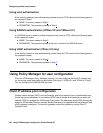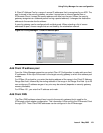
Configuring remote access users
114 Avaya VPNmanager Configuration Guide Release 3.7
Note:
Note: This is the only choice for VPNos 4.31
● Select Use RADIUS configuration to store the Dyna-Policies on a dedicated
RADIUS server.
● Select Use LDAP for configuration to store the Dyna-Policies on the Directory
Server.
● (Only with VPNos 3.x with iPlanet Directory Server) Select LDAP Authentication to use
the directory server to authenticate remote users. Select a method to store the policy.
● Select Use local database for configuration to store the Dyna-Policies on VSUs.
● Select Use LDAP for configuration to store the Dyna-Policies on the Directory
Server.
6. Click the Remote Client tab to bring it to the front. Configure the pat (tunnel) to a secure
DNS server to resolve client DNS names and to set the remote client idle time-out period.
● Check Enable Redirection Support if remote clients use private domain names, such
as accounting.avaya.com, for navigating their VPN. Then enter the Domain and
Protected DNS server address
● Enter the number of minutes of inactivity before sessions time out. Default is 4 minutes.
● If Syslog services are running, enter the number of minutes the VPN session can be
inactive before a Syslog message is sent. The default is 10 minutes.
7. Click OK to save your changes.
After the default parameters have been adjusted to meet your VPN’s needs, user can be
created.
Creating new user object
A user object is built with either a default or a custom CCD. Using a default CCD speeds up the
configuration process, but the existing default CCD might not meet all of your users’
requirements.
The New User dialog is used to enter information about a new user. Fields are included for the
new user’s name, password, and confirmation of password. A default user check box is
included to create a default user.



